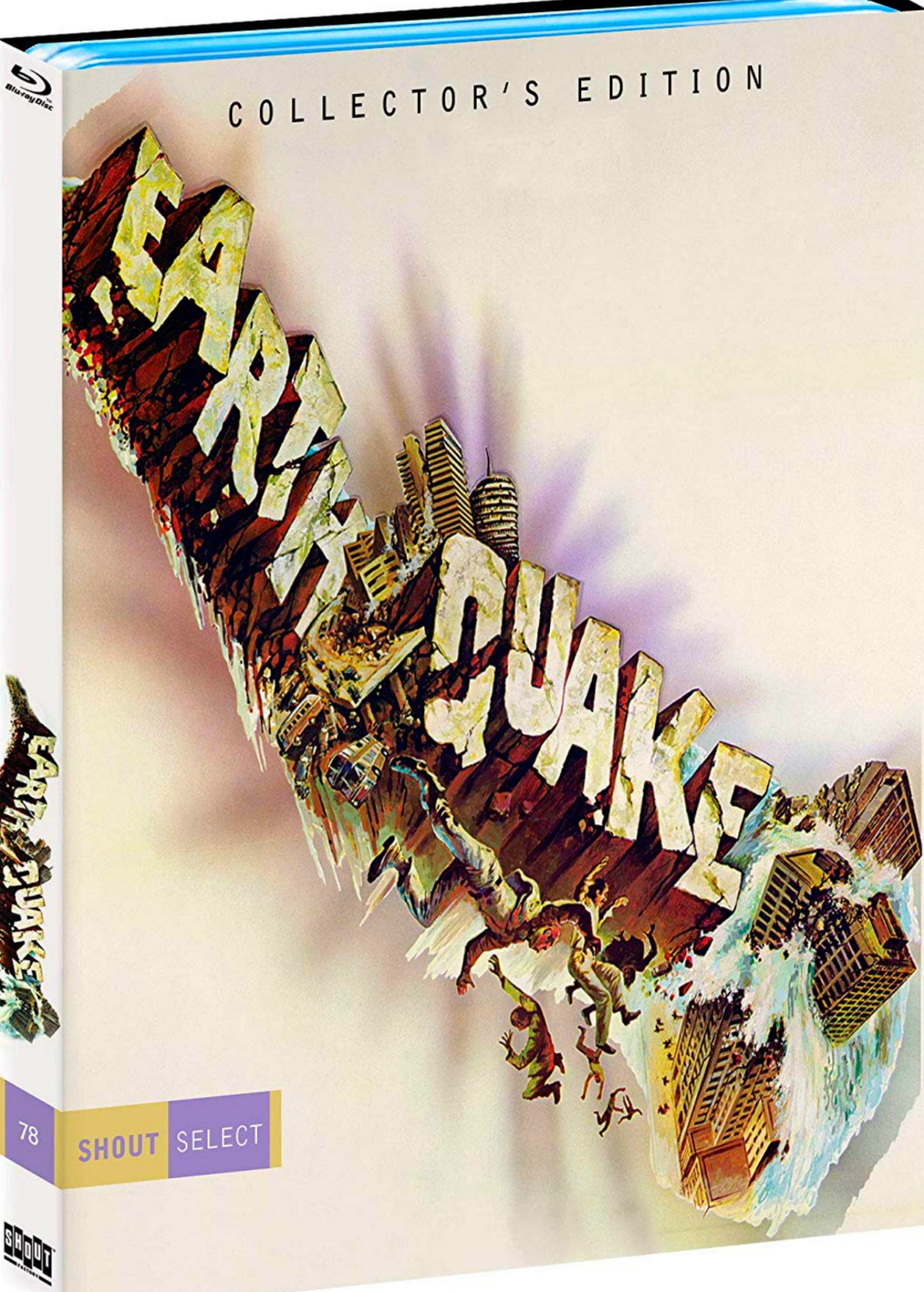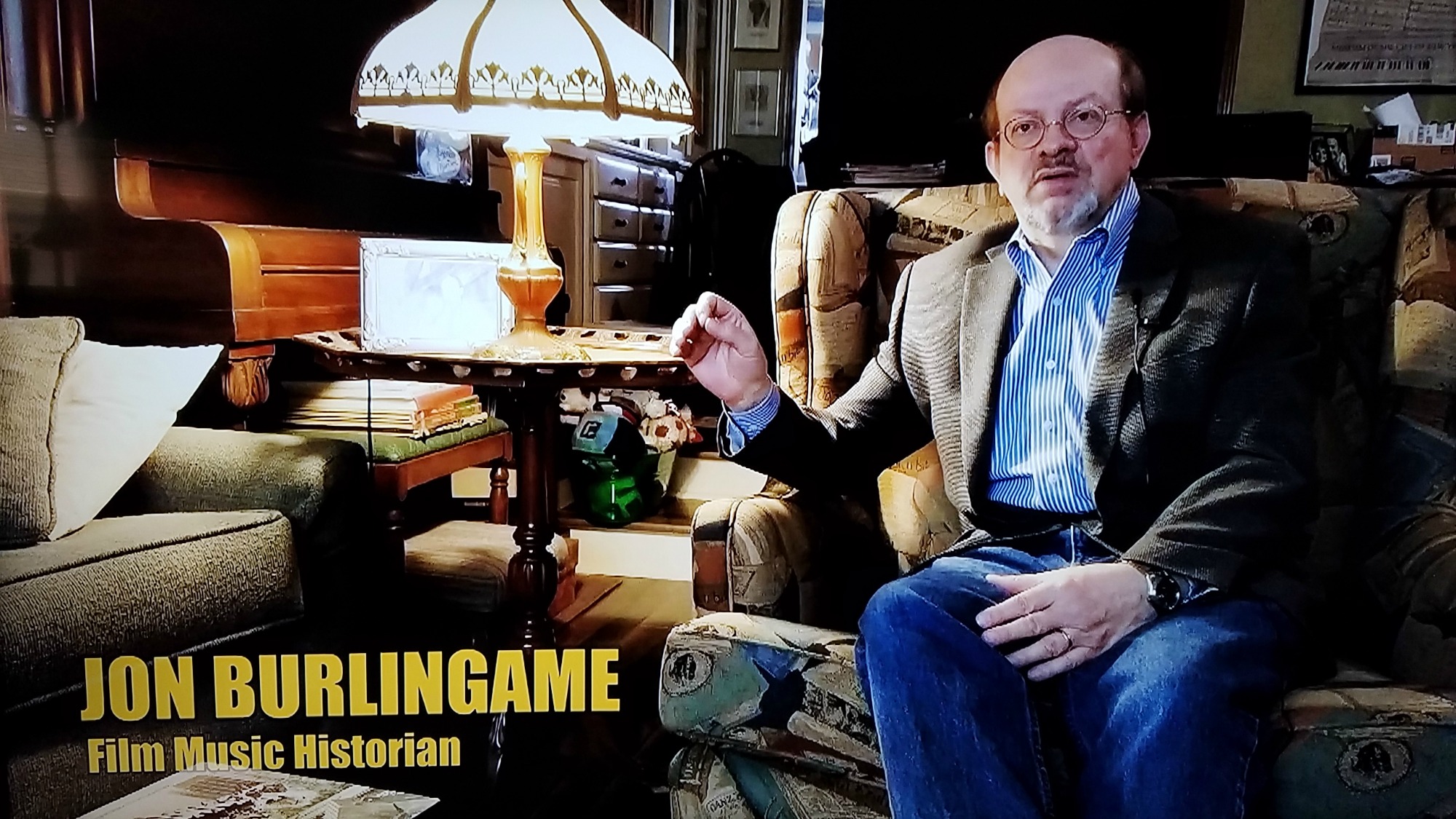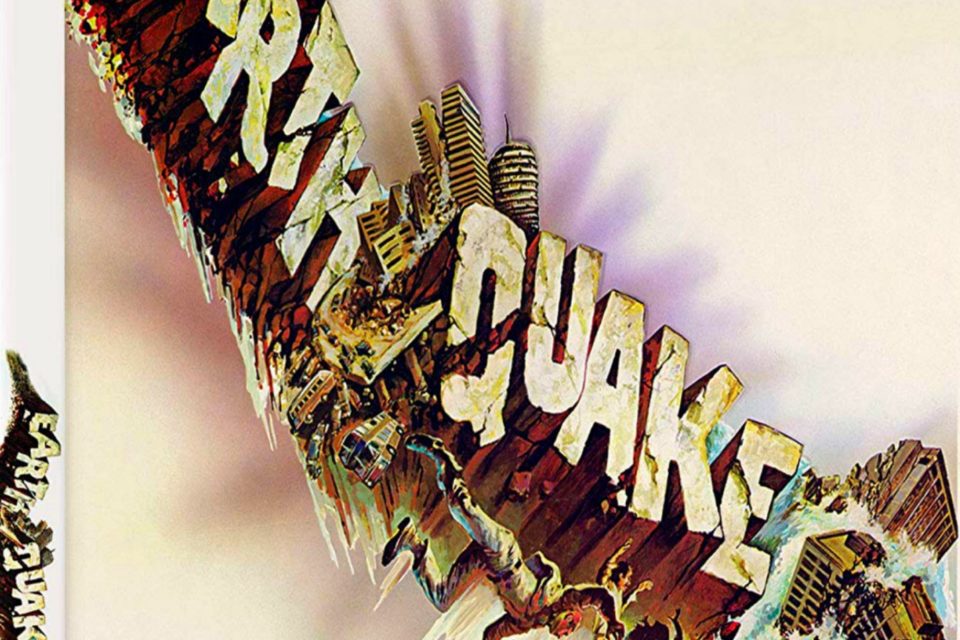Just a month after movie audiences saw Charlton Heston and George Kennedy help passengers survive the Universal Studios cockpit catastrophe sequel “Airport 1975” in October 1974, Universal and the two actors were drawing audiences back to theaters for what would become one of the most distinctive of all disaster films, “Earthquake.”
The decade was filled with movies depicting calamities in the sky, on the sea, and in skyscrapers, beginning with “Airport” in 1970, continuing with “The Poseidon Adventure” in 1972, and including “The Towering Inferno” just a month after “Earthquake” to end 1974 with a trio of tragedies in three months.
In addition to seeing Hollywood and Los Angeles icons reduced to rubble, what makes “Earthquake” stand out from the pack was the introduction of an innovative sound system that literally shook the seats of theater-goers.

As explained in one of three fascinating new featurettes on Shout! Factory’s two-disc collector’s edition Blu-ray coming Tuesday, May 21 ($29.99), “Earthquake” was shown in select movie houses that presented the film “in Sensurround.” Oscar-winning sound designer Ben Burtt (Star Wars, ET, Indiana Jones) explains in an 11-minute bonus feature that the first-of-its-kind system required theaters to install giant speaker cabinets in the back of the auditorium filled with large sub-woofers and amplifiers that were synchronized and triggered by an audio cue on the film soundtrack to generate a synthesized low-frequency enhancement that created rumbling and vibration during the 10-15-minutes when an earthquake or after-shock was taking place. I experienced this first-hand and it was a modestly effective gimmick. (The first quake hits at 53-minutes into the film, lasting about eight minutes, an extraordinary length for a real earthquake but this is in movie time, of course. An after-shock about 45-minutes later lasts about two minutes, and then a dam breaks that causes about five-minutes of flood scenes in the final seven minutes of the movie.) The Sensurround effect is presented on this Blu-ray on an optional 2.1 audio track, the other audio options being a DTS-HD Master Audio 5.1, and a 2.0 track.
While visual effects were becoming more popular, Sensurround represented the first time that a soundtrack was enhanced, according to Burtt. (Sensurround would later be used three more times for “Midway,” Rollercoaster” and “Battlestar Galactica.”) “Earthqquake” won an Academy Award for Best Sound.
The original theatrical cut of the movie on the disc begins with the amusing pre-film warning shown in these select theaters to patrons to “Please be aware… of effects” such as those “experienced in an actual earthquake. The management assumes no responsibility for the physical or emotional reactions of the individual viewer.”
In the theatrical release, relatively new TV actors Victoria Principal and Marjoe Gortner had prominent parts as a pretty big-haired young woman showing off her prominent chest against a very tight T-shirt who is stalked and held captive by a trigger-happy, big-haired psychopath National Guard solider whom his neighbors bully as “a fag” (one of several cringe-worthy of-its-era elements in the movie).
For the TV edition, Principal and Gortner were re-recruited to shoot an additional seven-minutes of footage of Principal dressing in her tight T-shirt with Gortner peering in her window.
Another 90-seconds of footage is a high school class-type instructional video about earthquake fault lines in California.
All of this is presented in this two-disc Shout! Factory Blu-ray on a second TV edition disc featured a 2k scan reconstruction edited together as it was shown on NBC, or with the 23 1/2-minutes of additional scenes available for viewing separately.
Even more additional footage that wasn’t of sufficient quality to include as part of the TV edition is offered here as bonus features, including a 7 ½-min scene of looters being held at gunpoint by the pawn shop owner’s widow, and an additional 90-seconds of the commercial airliner managing to get airborne again after nearly landing on the cracked runway.
As for the movie itself, presented here in a nice-looking 2k scan of the interpositive of the 2.35:1 theatrical cut, it was emblematic of the films of the genre, boasting a big cast of stars (as opposed to a cast of big stars) playing second-fiddle to the visual effects of the featured disaster, which was clearly more of a priority than a decent script. Despite being co-credited to Mario Puzo of “The Godfather” two years earlier and “The Godfather Part II” the same year as “Earthquake,” the dialogue here is usually forgettable and often groan-inducing.
As was often the case in films of this ilk, the cast included a couple of aging A-listers like Heston and Ava Gardner, a couple actors of recent hits, such as Richard Roundtree (“Shaft”) and Geneviève Bujold (“Anne of the Thousand Days”) and TV stars such as Lorne Greene, whose 14-year run as Ben Cartwright on “Bonanza” had ended the year before.
Walter Matthau has a silly role as a drunk who is wearing a loud shirt and an even louder tall red hat while sitting at a bar oblivious to all the chaos swirling around him.
The story is all over the place, with the primary characters having soap opera-type lives that intersect – Heston is an engineer married to the unhappy alcoholic daughter (Gardner) of his boss, played by Greene. Heston is having an affair with a young single mother (Bujold), and of course both women just happen to be trapped in the same parking garage where Heston heroically breaks through to save them, but must choose between them when one gets swept away by surging water.
Greene is also heroic in the aftermath, helping to lower his employees stranded in a high-rise building down to a safer staircase, that is, before his heart gives out.
Roundtree is a daredevil motorcyclist who comes to the aid of Bujold and her young boy trapped in a river wash with exposed power lines all around him.
And Kennedy is an angry cop who is placated when he gets to stare at Principal’s chest in her T-shirt (a comedy bit in 1974 that is yet another uncomfortable moment now).

There are indeed some spectacular visual effects, especially in light of this being prior to computers and digital technology, most notably a live-stock tractor-trailer being driven off a high freeway overpass, people falling from a building, and a flood in the film’s final five-minutes created by a break in the dam during an after-shock.
And the wonder of seeing some of the most iconic landmarks of Hollywood and Los Angeles crumble and collapse was part of the odd appeal of the movie. Now the visual oddities include seeing 1974 gas prices in L.A. at .49-cents!
Other effects were cheese-y even in 1974, including distorting camera lenses, shaking cameras, and falling pillars and beams supposedly made of concrete and brick that are clearly made out of something no heavier than Styrofoam.
The best effects were created by the matte paintings of Albert Whitlock showing large-scale destruction across Los Angeles. These paintings, which made up a significant percentage of a film frame that blended meticulously with actual footage, are described in another compelling new 11-minute featurette on this Blu-ray edition as being easier and quicker to create than actually taking the time, expense, and trouble of having a crew film on the real roads and L.A. river washes that were right across the street from Universal Studios.
What is lesser-known or recognized about “Earthquake” is the film’s Golden Globe-nominated score, created by the inimitable John Williams, who would become a superstar composer beginning a year later with “Jaws.”
This Shout! Factory Blu-ray offers a terrific new 16-minute perspective on the score with some fascinating background about Williams himself from film music historian Jon Burlingame, who notes that Williams began his career in television on the Universal Studios lot at what was then called Revue Studios, where they had their own scoring stage in those days.
He also notes that “Earthquake” features only 42-minutes of music in the two-hour theatrical cut as compared to about 95-minutes in “The Towering Inferno,” owing to the different approach of disaster movie legend Irwin Allen versus “Earthquake” director Mark Robson, who wanted the Sensurround and sound effects to provide most of the sound for the movie. Williams’ score was simply designed to create the complementary and emotional needs of the film, often with just 30-40 musicians for the intimate moments, reserving the full 60-piece symphonic orchestral score for the few big moments, according to Burlingame.

The two-disc set features an impressive array of other bonus features as well, including audio-only interviews with Heston, Greene, and Roundtree, as well as trailers, TV and radio spots, still images, and more.
By Scott Hettrick
